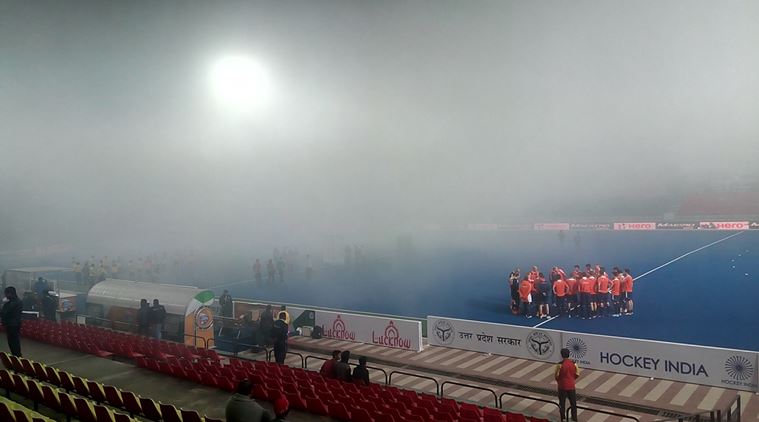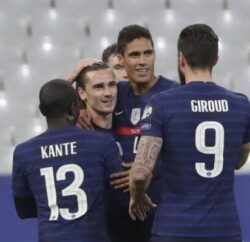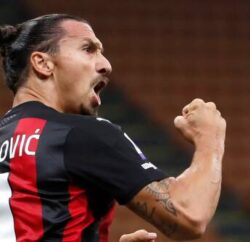| Lucknow |
Updated: December 8, 2016 8:24 am
 With matches, on some days, scheduled at 10am and 8pm, fog is a genuine concern (India play every match under lights). (Source: Express Photo)
With matches, on some days, scheduled at 10am and 8pm, fog is a genuine concern (India play every match under lights). (Source: Express Photo)
At 7.40pm on Wednesday, the Dhyan Chand Stadium disappeared in thick mist. Minutes before, South Korea and Holland had finished a practice match in very poor visibility. By the time they began their post-match cool-down drills, the fog became so dense that the players could barely see each other on the field.
Fog has been an unwelcome guest every evening here for the last one week. So much so that visibility, or the lack of it, has pushed everything else surrounding the junior World Cup into the background. With matches, on some days, scheduled at 10am and 8pm, fog is a genuine concern (India play every match under lights). And the International Hockey Federation (FIH) is already putting a contingency plan in place and has kept the possibility of rescheduling the matches open.
It’ll be a shame if poor visibility does affect play. For if the fog lifts, we will get to see if the future of Indian hockey seems as promising as the present. The last 18 months have been the most stable for Indian hockey in a long time. Under master tactician Roelant Oltmans, the spunk has returned and they have occasionally played with flair that had earlier gone missing. As the team enters a new Olympic cycle, a few changes in the playing group will be inevitable.
Oltmans, who signed an extension till the 2020 Olympics earlier this week, has already said there will be a new core group of players when the team reassembles in March after the Hockey India League. The next 12 days will provide proper assessment of the next generation of players and whether they have the ability to challenge the current lot for a place in the senior national team.
The previous junior World Cup, in 2013, saw the emergence of Manpreet Singh. He had already established himself in the senior team but the World Cup further enhanced his reputation and by the time the Rio Olympics came around, he had displaced Sardar Singh as the centre-half – perhaps the most important position on the field.
Focus on skipper
This time, the focus will be on captain Harjeet Singh, who also plays as a centre-half. Sardar’s position in the senior team has come under increasing pressure. Some believe he is slowing down the pace of then attacks of the team that thrives on quick counters. Some have even suggested he made it to the Rio squad based largely on reputation. And even if he manages to cling on to his place for now, by the time the 2018 World Cup or the Tokyo Games take place, Sardar knows his place in the team will no longer be a certainty.
The 20-year-old Harjeet will hope to put further pressure on India’s best player of the last decade. Harjeet, incidentally, has modelled his game on Sardar and Manpreet. In the few junior tournaments he has played, Harjeet has shown that he is crafty like them, creating moves and distributing balls to the forwards with amazing precision. The midfielder has already made his senior team debut at the Azlan Shah Cup earlier this year. And as a centre-half, he gave a decent account of himself.
Sardar’s isn’t the only position up for grabs. VR Raghunath and Rupinder Pal Singh, too, will be watching over their shoulders. Harmanpreet Singh, who has been shortlisted for the FIH’s Rising Star of the Year award, is already pushing them. The 20-year-old has been among the highest goal scorers at almost every junior tournament India has played in the last two years. It earned him a promotion to the senior team, where he has done enough to give Oltmans a selection headache.
In several tournaments this year, the Dutchman has been forced to juggle between the two veteran drag-flickers while Harmanpreet has been a constant. At the Olympics, all three were a part of the squad. But that was possible largely because India took just one goalkeeper to Rio, giving Oltmans the luxury of an extra outfield player. Which brings us to the third, and most crucial, position – the goalkeeper.
For almost two years, India, at times, have depended solely on PR Sreejesh to bail them out of tough situations. Sreejesh has joined the junior team as a mentor and oversaw the training session on Wednesday. Perhaps, he too is keen to find his successor. Oltmans and his two predecessors Terry Walsh and Paul van Ass have tried numerous options in goal but every time they’ve been reminded of the huge void.
Akash Chikte showed some promise during the Asian Champions Trophy but a good performance by Vikas Dahiya or Krishan Bahadur Pathak would put them firmly in contention as the back-up goalkeeper.
Up front, Mandeep Singh – a veteran now in the junior ranks – will get another opportunity to live up to the promise he had shown two years ago. One gets the feeling that this is Mandeep’s last chance to show his worth.
For that to happen, though, he’ll hope the mist will lift on Lucknow, and play takes place unhindered.
Eye on the future
The junior hockey World Cup will provide a peek into whether the next generation of players can challenge the established players. A few players who might stake a claim for a place in the national team.
Golden chance for Dahiya, Pathak
India has still not found a suitable replacement for PR Sreejesh, who has almost singlehandedly held fort in the last two years. While Akash Chikte showed some promise at the Asian Champions Trophy, a good performance by Vikas Dahiya or Krishan Bahadur Pathak could put them in contention to be Sreejesh’s back-up.
Overtaking his idol
Harjeet Singh grew up admiring Sardar Singh and has based his game on the former India captain and Manpreet Singh. Like them, Harjeet too is a centre half and is adept at creating chances for the forwards. Sardar, meanwhile, has been under pressure to justify his place in the team. An impressive performance by the junior India captain will further put Sardar in a spot of bother.
Three-way battle
Harmanpreet Singh’s emergence as a sturdy defender and an effective drag-flicker has directly impacted the positions of VR Raghunath and Rupinderpal Singh. Roelant Oltmans has shuffled between the two experienced players while giving Harmanpreet opportunities in the senior team. Another strong performance with the junior team by Harmanpreet will only strengthen his case for a senior team spot while jeopardizing Raghunath and Rupinder’s.
16 Number of teams taking part in the junior World Cup.
6 Number of junior World Cups Germany has won out of the 12 editions of the tournament. They are eyeing a hat-trick of titles in Lucknow.






